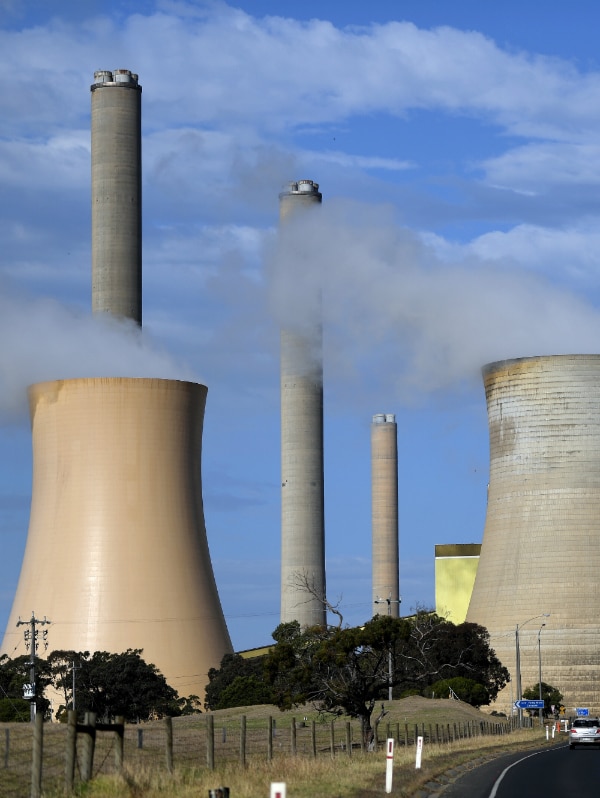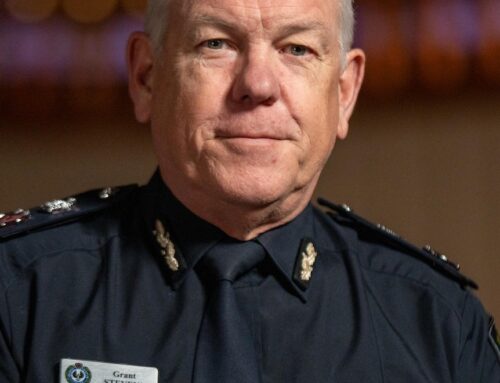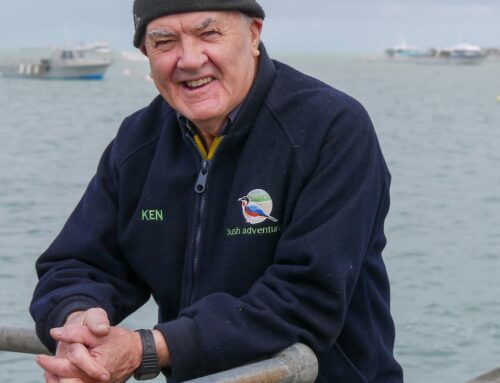The Coalition wants to build nuclear reactors at seven locations across the country, and several are on or near known fault lines.
But is that a problem?
There are plenty of countries with nuclear power that have more seismic activity than Australia, but that doesn’t rule it out as a potential complication for the Coalition’s nuclear aspirations.
Even where fractures in the ground (known as faults) have not been identified, earthquakes, landslides and groundwater issues can still be a risk.
Nationals leader David Littleproud said preliminary assessments at the proposed sites had been made and there would be further assessments made.
And he says where there are risks, they can be engineered around.
Nowhere is immune from earthquakes
Earthquakes above magnitude 5.0, like the deadly 1989 Newcastle earthquake, happen somewhere in Australia once every two years on average.
The Seismology Research Centre (SRC) says earthquakes exceeding magnitude 7.0 occur somewhere in Australia once every 100 years or so, compared to every few years in active areas like Japan or California.
SRC’s chief scientist Adam Pascale says those could happen anywhere, so no region can be ruled out as “immune” to significant earthquakes, though faults make an earthquake in that area more likely.
But nuclear facilities are designed to withstand seismic hazards for the regions where they are built.
French facilities, for example, are designed to withstand earthquakes twice as strong as the 1,000-year event calculated for each site, while Japanese facilities have automatic safe shutdown mechanisms if ground motions above a certain level are detected.
With facilities in existence overseas designed to withstand earthquakes up to magnitude 7.5, GeoScience Australia says “there are only some geological characteristics that would pose an un-engineerable hazard which would mean the site could not be safely considered for a nuclear power plant”.
“In the Australian context, this includes the identification of a fault capable of producing large earthquakes and surface offsets within the immediate vicinity, the liquefaction potential of a site, the likelihood of underground cave collapse, and landslide potential,” the agency’s earthquake hazard scientist Tamarah King said.
Geoscience Australia’s ‘Neotectonic Features’ map shows definite and possible faults near several of the proposed nuclear sites, including at Loy Yang in Victoria, Port Augusta in South Australia and Callide west of Gladstone.
Dr King said faults with a demonstrated or suspected history of generating large earthquakes would require detailed study to determine if they posed a risk to infrastructure in the near future or longer term.
“All sites must have detailed site-specific studies to assess the viability of nuclear power plants,” Dr King said.
Detailed work needed to determine risk
But even if no “exclusionary criteria” were found, higher seismic activity or other hazards could cost the government more money to build plants.
The CSIRO estimates each plant would cost at least $8.5 billion to build before accounting for cost overruns, and the first plant would likely attract a “first of its kind” premium that would double its price to about $17 billion.
Mr Pascale at the Seismology Research Centre said those costs would increase the more engineering required to make safe a facility.
“The engineering that is going to go into making that facility earthquake-resistant to the degree that it needs to be to survive the potential earthquake in its lifetime may make it an uneconomical decision,” Mr Pascale said.
“That might be offset by other infrastructure costs, like proximity to transmission lines … so I think it will come down to economics.”
Mr Pascale added there was much still not known about the geology of some parts of Australia, including faults that may not have been found.
“Some areas of the country we know better than others, we’ve done studies in areas where we’ve got more data,” he said.
“For the Victorian site at Loy Yang, the Seismology Research Centre that I am with has been monitoring that part of Victoria for the last 50 years, and there is a lot of earthquake activity in Gippsland and that region, so we know it quite well.
“We’ve seen even in recent years we’ve had large earthquakes in the region, so that would be something certainly to have a look at.
“Some of the other areas where there’s proposed sites around the country I know there has been studies, but again everything would need a site-specific study.”
Geological hurdles reach beyond earthquake risk
It’s not just earthquakes that planners would have to think about.
The nuclear regulator ARPANSA has a long list of considerations before approving a nuclear facility: landslide risk, erosion processes, soil and rock types, subsidence and collapse due to underground features, liquefaction potential, and groundwater levels, as well as faulting or the presence of fracturing.
Blue Mountains Mayor Mark Greenhill said he held “grave concerns” over a potential reactor in neighbouring Lithgow, and early indications of a groundwater risk there.
“Our concern is that there could be a groundwater connection to a major water course that then affects the broader region. The Blue Mountains world heritage area sits right beside where this facility is,” Mr Greenhill said.
“So, any waste that’s fed into the world heritage area is obviously of global significance.
“The fact is this proposition is very light on detail, there’s no discussion in what’s been released about how those groundwater concerns would be obviated, and that is a real worry to us. This is a very delicate ecosystem.”
The Coalition would not need to wait for nationwide and state-level nuclear bans to be lifted to conduct hazard assessments at the sites it wants to build nuclear plants.
And with those assessments typically taking about a month to six months to complete, it may not need to wait long to learn whether it can actually build nuclear power.
Want to know more about the nuclear power announcement? Send us your questions and we’ll try to answer them as part of our coverage.
Posted , updated




